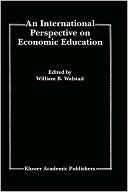Category Books
- Fiction Books & Literature
- Graphic Novels
- Horror
- Mystery & Crime
- Poetry
- Romance Books
- Science Fiction & Fantasy
- Thrillers
- Westerns
- Ages 0-2
- Ages 3-5
- Ages 6-8
- Ages 9-12
- Teens
- Children's Books
- African Americans
- Antiques & Collectibles
- Art, Architecture & Photography
- Bibles & Bible Studies
- Biography
- Business Books
- Christianity
- Computer Books & Technology Books
- Cookbooks, Food & Wine
- Crafts & Hobbies Books
- Education & Teaching
- Engineering
- Entertainment
- Foreign Languages
- Game Books
- Gay & Lesbian
- Health Books, Diet & Fitness Books
- History
- Home & Garden
- Humor Books
- Judaism & Judaica
- Law
- Medical Books
- New Age & Spirituality
- Nonfiction
- Parenting & Family
- Pets
- Philosophy
- Political Books & Current Events Books
- Psychology & Psychotherapy
- Reference
- Religion Books
- Science & Nature
- Self Improvement
- Sex & Relationships
- Social Sciences
- Sports & Adventure
- Study Guides & Test Prep
- Travel
- True Crime
- Weddings
- Women's Studies
An International Perspective On Economic Education »

Authors: William B. Walstad
ISBN-13: 9780792394372, ISBN-10: 0792394372
Format: Hardcover
Publisher: Springer-Verlag New York, LLC
Date Published: January 1994
Edition: (Non-applicable)
Author Biography: William B. Walstad
Book Synopsis
Economics is taught in some form in the secondary schools of nations throughout the world. The subject is rarely taught in elementary schools, and while economics courses are offered in universities, the majority of students end their formal education with secondary school. Thus, the best opportunity for the economic education of the youth of a nation occurs in secondary schools. This book examines economic education at this critical level of the educational system.
The teaching of economics in secondary schools varies across countries. These differences occur because of history, the structure of education, and other national factors. At the same time, there are common elements in the economic education of many countries, especially in content coverage. This contrast between the common features and the uniqueness of economic education in secondary schools of major industrial nations exemplifies the international perspective presented in this book.
The international perspective is developed in the six sections of the volume. The first section discusses why nations should include economics in school curricula, and presents a framework for teaching economics that should have global appeal. Dissension and consensus on economic issues among North American and European economists are examined in the second section. The third section surveys the U.S. research literature on precollege economic education and assesses the current state of economics instruction in U.S. schools. The economics curricula and educational practices in seven other nations — the U.K., Canada, Japan, Germany, Austria, Korea, and Australia — are described in the fourth and fifth sections. The fifth section also presents international comparisons of economic understanding based on national testing in six of those nations. The sixth and final section explores the role of economic education in centrally planned economies, and its effects on the transition to a market economy, using Russia, Bulgaria, and China as case studies.
Table of Contents
| List of Figures and Tables | ||
| List of Contributors | ||
| Acknowledgments | ||
| 1 | An Introduction to an International Perspective on Economic Education | 1 |
| 2 | Economic Education for a Half-Century of Radical Change | 19 |
| 3 | A Global Framework for Teaching Economics | 37 |
| 4 | Economists' Ideological Conflicts and Consensus on Economic Issues, and Their Implications for Economic Education | 47 |
| 5 | A Comparison of the Views of Economists, Economic Educators, Teachers and Journalists on Economic Issues | 65 |
| 6 | Research on High School Economics in the United States: Further Considerations | 89 |
| 7 | An Assessment of Economics Instruction in American High Schools | 109 |
| 8 | Economic Understanding in the United Kingdom | 137 |
| 9 | The Canadian Experience and the Lasting Impact of Economic Education | 157 |
| 10 | Economic Education in Japanese Secondary Schools | 169 |
| 11 | Economic Literacy in German-Speaking Countries and the United States: Methods and First Results of a Comparative Study | 183 |
| 12 | Economic Literacy in the Republic of Korea and the United States | 203 |
| 13 | High School Economics in Australia | 219 |
| 14 | The Changing Face of Economics Instruction in Russia | 233 |
| 15 | Economic Education and Transition in Eastern Europe | 255 |
| 16 | High School Economics in the People's Republic of China | 273 |
| Index | 291 |
Subjects
 Economics
Economics  Economics - General & Miscellaneous
Economics - General & MiscellaneousEducation & Teaching
 Educational Levels & Settings
Educational Levels & Settings  Secondary Education
Secondary EducationEducation & Teaching
 Secondary Education
Secondary Education  Economics -> Study and teaching (Secondary)
Economics -> Study and teaching (Secondary)
